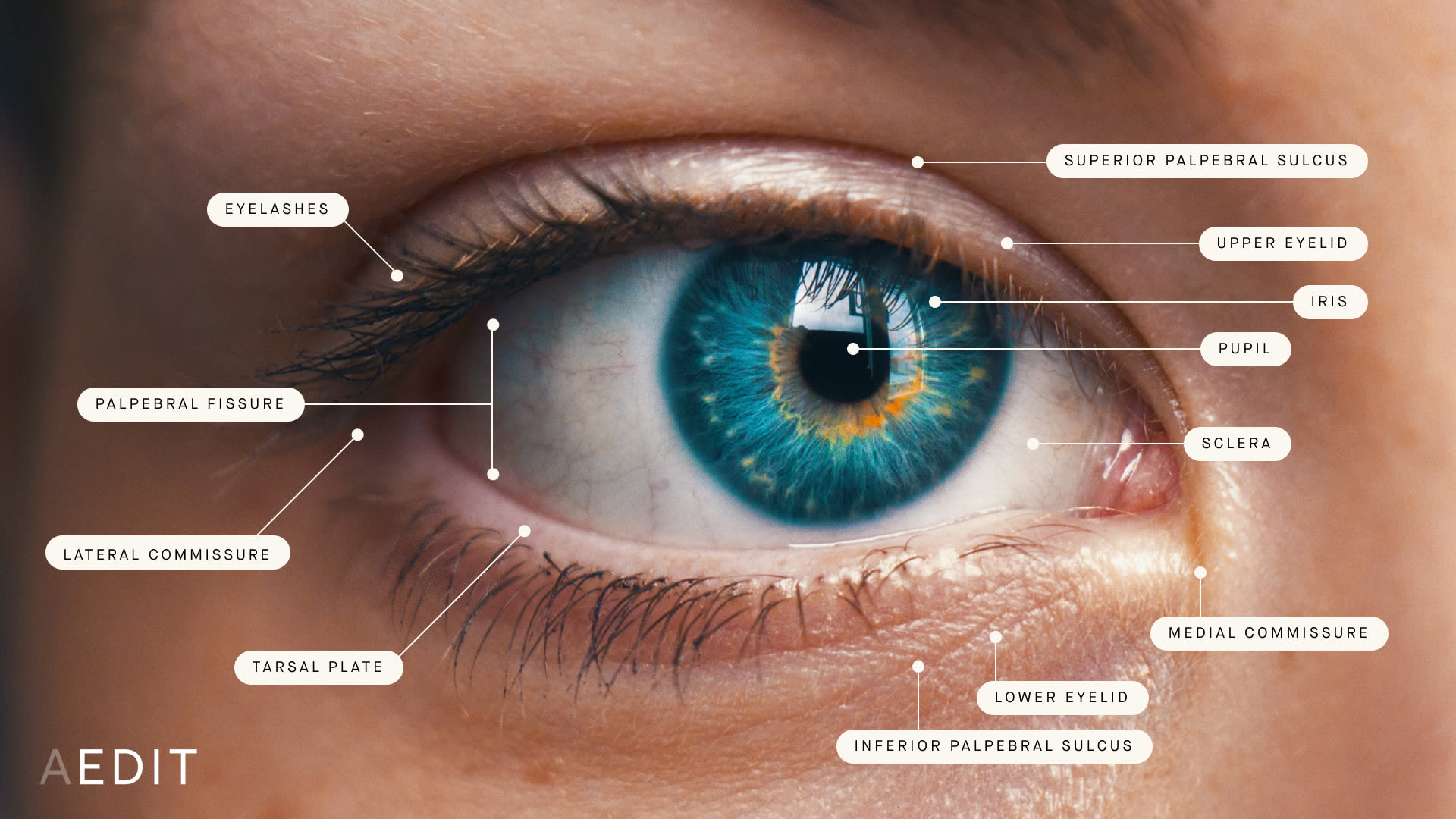
The Skinny
Average Recovery
1 weeks
Permanence
Temporary
Application
Surgical Procedure
Surgical
Yes
Cost
$1500 - $5000
The Specifics
What is a lower eyelid malposition - lateral canthal tendon suspension canthopexy produre?
Lower eyelid malposition - lateral canthal tendon suspension canthopexy is a surgical procedure performed on the lower eyelid to provide reinforcement of the lower lid canthal tendon, and preservation of orbicularis muscle function in patients undergoing a lower eyelid blepharoplasty.
The Anatomy of the Eye

This procedure is especially helpful for older patients with numerous age-related lower eyelid changes. The goal of a lower eyelid malposition - lateral canthal tendon suspension canthopexy produre is to provide a surgical correction for eyelid malposition, rejuvenate a sagging lower eyelid, and correct eye conditions like ectropion, dry eyes, and excessive tearing.
What cosmetic concerns does a lower eyelid malposition - lateral canthal tendon suspension canthopexy produre treat?
Who is the ideal candidate for a lower eyelid malposition - lateral canthal tendon suspension canthopexy produre?
The ideal candidate for a lateral canthal tendon suspension canthopexy produre has mild to moderate eyelid drooping or palpebral ectropion. The Lateral canthal tendon suspension canthopexy produre is commonly used in patients undergoing a lower blepharoplasty. It is not recommended for those with severe ectropion, or lower lid laxity.
What is the average recovery associated with a lower eyelid malposition - lateral canthal tendon suspension canthopexy produre?
Most acute bruising, swelling, discoloration, and tenderness around the lower eyelids and orbital rim from a lateral canthal tendon suspension canthopexy produre resolves within seven to 14 days. Patients will experience swelling both around and on the ocular surface itself. The ocular surface may also appear red. Ice packs and sleeping in an elevated position can lessen swelling and bruising. Most patients feel comfortable in public after two weeks. Full physical activity can be resumed after three weeks.
What are the potential side effects of a lower eyelid malposition - lateral canthal tendon suspension canthopexy produre?
Potential side effects of lower eyelid malposition - lateral canthal tendon suspension canthopexy produre is rounding of the outer corner of the upper eyelids and/or lower eyelids, recurrent sagging of the lower eyelid or incomplete eyelid position improvement, development of scar tissue, dry eyes, tearing, eyelid retraction, eyelid ptosis, upper eyelid and lower eyelid asymmetry or poor eyelid closure, changes in sensation due to disturbance of the facial nerve, and poor eyelid position.
What can someone expect from the results of a lower eyelid malposition - lateral canthal tendon suspension canthopexy produre?
The result of a lower eyelid malposition - lateral canthal tendon suspension canthopexy produre is an immediately noticeable correction of a sagging or malpositioned lower eyelid. The results of the Lower Eyelid Malposition-Lateral Canthal Tendon Suspension Canthopexy usually do not loosen over time.
What is the average cost of a lower eyelid malposition - lateral canthal tendon suspension canthopexy produre?
A lateral canthal tendon suspension canthopexy plastic surgery procedure can cost anywhere from $1,500 to $5,000. The actual cost of a lower eyelid malposition - lateral canthal tendon suspension canthopexy produre is dependent upon location, plastic surgeon, and length and involvement of the plastic surgery.
Pros
- Eyelid Tightening
- Reinforcement Of The Eye Muscle
- Reduction In The Amount Of Skin Removed
Cons
- Asymmetry
- When Performed Aggressively A Windswept Appearance
- When Performed Aggressively A Hollowed Appearance
Invasiveness Score
Invasiveness is graded based on factors such as anesthesia practices, incisions, and recovery notes common to this procedure.
What to Expect
A lateral canthal suspension canthopexy reinforces the existing tendon of the lower eyelid by surgically stitching it to create extra support and reduce the risk of complications related to a lower blepharoplasty. Here is a quick guide for what to expect before, during, and after a lateral canthal suspension canthopexy.
The Takeaway
A lower eyelid malposition - lateral canthal tendon suspension canthopexy produre is a lower lid eyelid surgery designed to improve the lower eyelid margin and correct eyelid malpositions. This oculoplastic surgical procedure targets the canthal tendon of the lower eyelid to restore eyelid position, and provide ectropion repair, eyelid ptosis repair, and eyelid retraction surgical correction. Orbicularis tone is preserved, and eyelid tightening can correct undesirable eye conditions and restore facial aesthetic.





